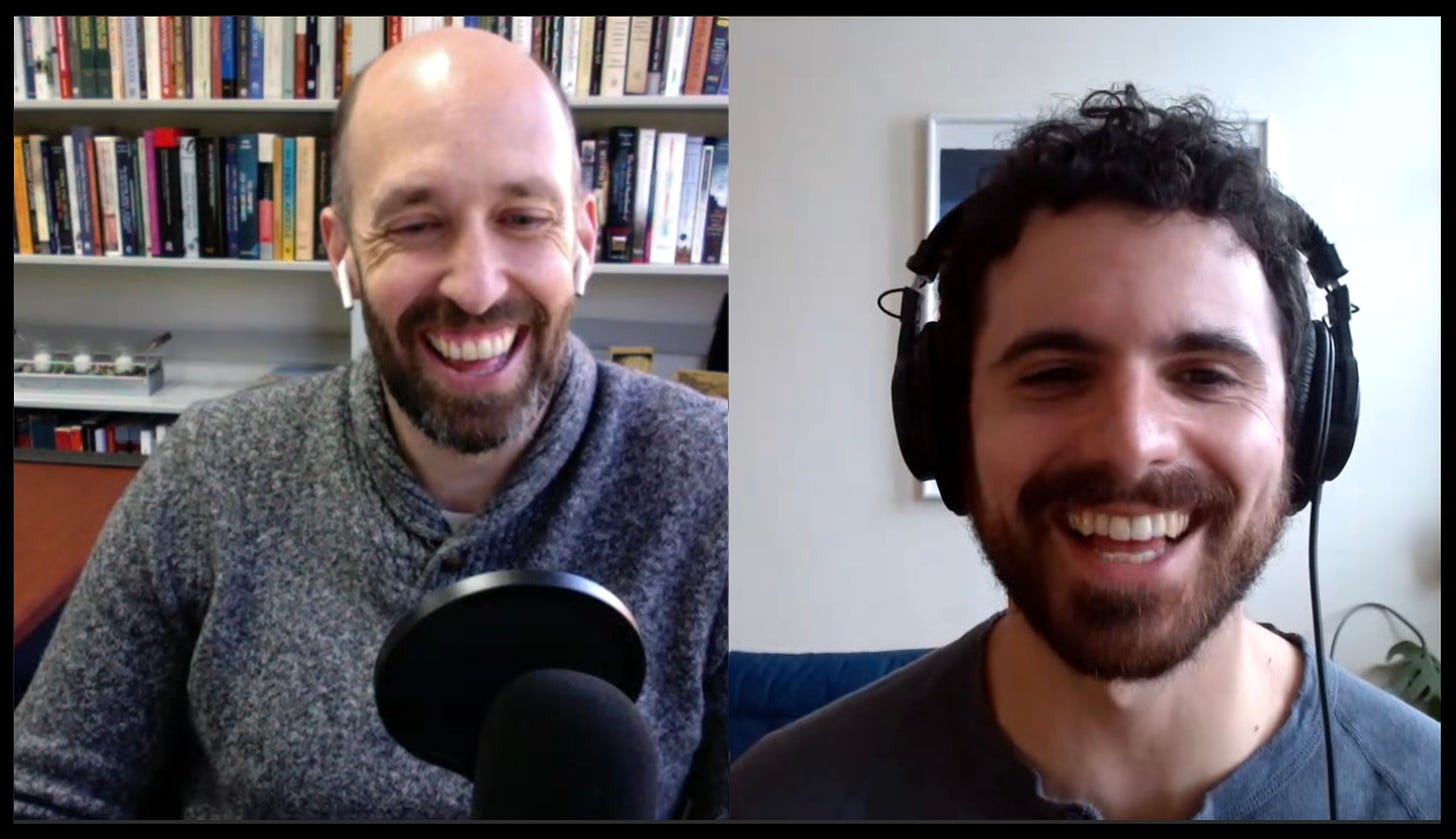I’m not exactly the most versed on influencer culture, but I learned of a controversy this week over a Mormon TikTok star accused of advancing the faith's historically conservative views on gender. Social media algorithms must know that I recently spoke with Professor Benjamin E. Park about his new book, American Zion: A New History of Mormonism.
In his book, and in conversation, Professor Park (Sam Houston State University) traces the history of Mormonism from a persecuted minority into a cultural mainstay today. He contextualizes not just lingering questions over gender and racial identity in the church but in America writ large. Professor Park also reveals when and why Mormons allied with Republicans, whom they once reviled.
A condensed transcript of our conversation edited for clarity is below. You can also listen to the audio of our conversation, which includes more discussion of polygamy, BYU’s curriculum, why every time I write “Mormon” rather than the church’s full name it’s a “major victory for satan,” and more:
Ben: To begin, can you talk about Joseph Smith and the discovery of the gold plates?
BEP: In the early 1800s, Joseph Smith was a religious seeker, like many others, trying to find some kind of anchor in the sea of chaos of the era.
His parents and his grandparents had gone through many transformations that marked the early days of the republic where a new market and religious spiritual economy had opened up. His grandparents found stability in new lines of work and new denominations, but his parents suffered from economic setbacks and struggled to find religious harmony.
Amid that backdrop, Smith began claiming to have religious visitations. He’d participated in treasure quests trying to find gold and silver in various locations (in fact he met his eventual wife, Emma, on one of these treasure quests). By the late 1820s, his stories of finding this treasure took on a more religious hue, and he told an audacious story of being visited by an angel telling him of gold plates that were buried in a hill nearby.
Few other people were allowed to see the plates, but Smith claimed to translate them, ultimately publishing The Book of Mormon in 1830. The movement of people who started following Smith became known as Mormons.
Ben: Can you talk a little bit about the revelations Smith had? My favorite one had to do with Emma Smith getting tired of cleaning tobacco stains after church gatherings.
BEP: Joseph Smith also started dictating revelatory documents in the voice of God saying thus sayeth the Lord, yada yada yada. Mormons viewed Joseph Smith as an intermediary between them and the divine, giving direct instructions and concrete answers to their questions in the form of revelations.
Sometimes the revelations were on very esoteric topics like how many heavens are there in the eternities? Sometimes, they were very concrete, like when Emma Smith told Joe she was tired of cleaning up tobacco after all of the men of the church’s priesthood gathered together. Smith then dictated a revelation that came to be known as the Word of Wisdom, saying that saints (members of the church) should refrain from things like tobacco, hot drinks, and alcohol. Many Mormons still adhere to the Word of Wisdom today.
Ben: My other favorite revelation was when there was an early challenge to Smith’s leadership, and then God told him, “No one shall... Receive commandments & Revelations in this Church excepting my Servent Joseph.”
It’s like your friend calling to see if you can help them move and you’re like, Sure, no problem. Oh, wait one second — I have God on the other line. What’s that, God?
BEP: You have an appointment.
Ben: Exactly.
Another central piece of the early history of Mormonism is displacement. Can you talk about the forced relocations of Smith and his followers from the East Coast to the Midwest to Salt Lake City?
BEP: The same thing that drew many followers to Joseph Smith — that he claimed to be dictating the will of God — led many other people to think Mormons were fanatics and frauds led by an imposter. So there were conflicts from the beginning.
One of the most dramatic instances was in a location outside of present-day Kansas City, in Independence, Missouri. Joseph Smith dictated that this sparsely settled village was Zion, but when Mormons started moving there, the people already in Independence were like, I'm not too sure about this faith moving in. Within a couple of years, Mormons got kicked out of the county.
At the same time, Indigenous Americans were being kicked out and moved to reservations. In many ways, Mormons saw themselves as fellow sufferers. When the Saints were later kicked out of Missouri as a whole, and then out of Illinois, they went to what was then Northern Mexico and the Great Salt Lake basin.
Mormons hoped they could team up with the Native Americans living there and fulfill one of the Book of Mormon’s prophecies of integrating Native Americans into the church. Utah’s Indigenous nations didn’t exactly agree that it was their destiny to be Mormons, leading to more conflict.
Ben: You write that as Mormons flocked to what would become Salt Lake City, they “fully appropriated the American quest for suppression and removal” of Native Americans.
BEP: Mormonism's relation to race was quite complicated. At the very beginning, I’ll add, there were Black members of the faith, and it didn't seem like there was a racial restriction.
Keep reading with a 7-day free trial
Subscribe to Skipped History to keep reading this post and get 7 days of free access to the full post archives.





